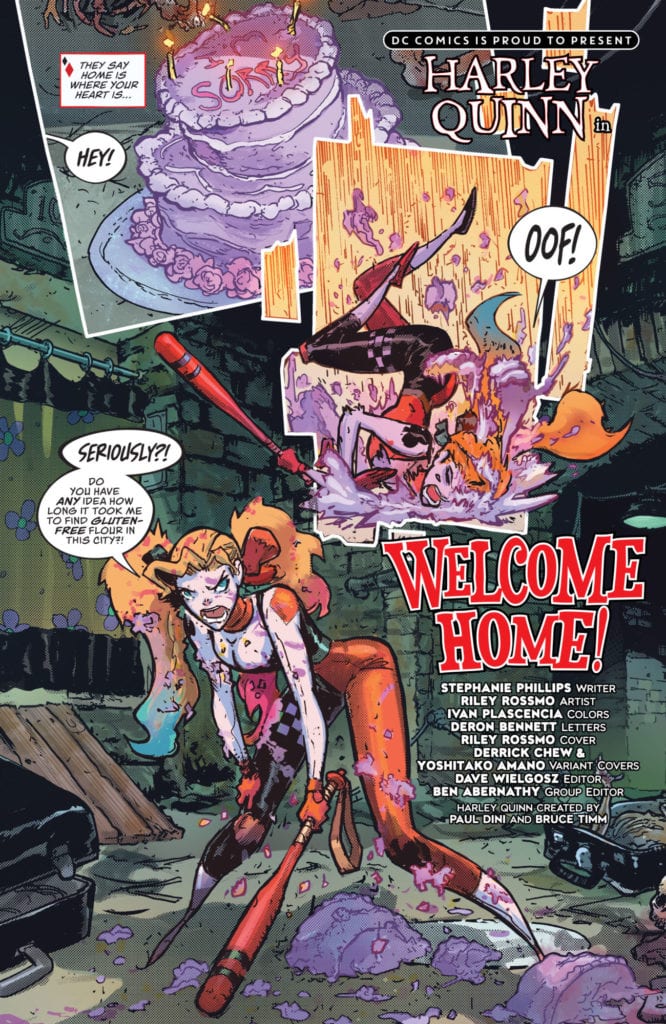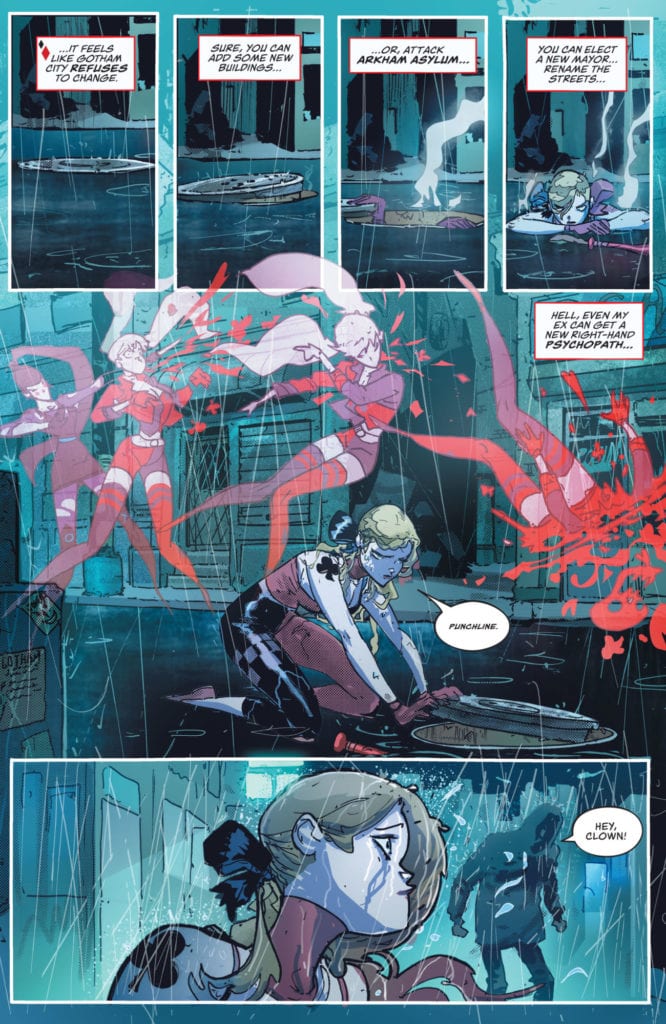In DC Comics’ Harley Quinn #1, on sale March 23, The Mistress of Mayhem officially joins the Infinite Frontier initiative with a launch that should interest casual and hardcore fans alike. Writer Stephanie Phillips takes Harley in a direction that echoes the character’s recent exploits in her movie and her animated series by capturing her struggle to be a hero. Riley Rossmo’s art takes some getting used to, as it’s rough around the edges, but it thematically fits Harley’s imperfect beginning as a crimefighter. Colorist Ivan Plascencia compliments the book’s cartoonish aesthetic by utilizing vibrant colors when the situation calls for it, and letter Deron Bennett brings a few fitting tricks to the table, like unconventional sound effects, to bring even more pizzazz to the story.

With Harley’s newest solo adventure, Phillips picks up where the Cupid of Crime left off at the end of “Joker War.” Based out of her new apartment in Little Santa Prisca, a corner of Gotham named after Bane, Harley is determined to prove that she’s one of the good guys, but this quest is already proving to be quite difficult. The public doesn’t trust her, and it’s hard to blame these people; after all, Harley used to pal around with the Joker. Plus, even though Batman is giving her a chance, the Dark Knight quickly clarifies that he’s watching Harley like a hawk. Clearly, the former Suicide Squad star has her work cut out for her.
From the start, Phillips makes it clear that Harley is struggling to escape her past. Perhaps the most compelling device used to convey this conflict comes with the usage of appears to be Harley’s ghost, or at least her past self. During a confrontation with a harsh citizen who calls her a clown, Phillips shows the reader how the Harley of old would have reacted; she would have simultaneously quipped and smashed the bully with a hammer. But the new Harley internally watches this violence unfold and takes a passive approach to the situation. Instead of escalating the conflict, she removes herself from it by departing the scene. It’s also clear that she’s saddened by this mistreatment, which makes Harley even more sympathetic right away.

Rossmo and Plascencia beautifully capture this tale of two Harleys. The current-day version is drawn with her modern costume and subdued colors that fit nicely in the midst of the pouring rain. Meanwhile, the classic Harley, old costume and all, pops off the page with brilliant red tones, representing the character’s inner anger and her temptation to revert to this reckless version of herself. Harley overcomes her instinct to lash out at her critic, but this clash of her two selves makes this moment one of the book’s most powerful.
Bennett’s lettering works well with the story from start to finish. In one particular instance, he subtly adds to the narrative that’s unfolding on the page. He compliments the thunderstorm setting by utilizing a character-themed sound effect. Rather than using a traditional yellow for the electric lightning, Bennett instead incorporates a purple background to this sound, which naturally makes the reader think of the Joker because, after all, it’s his color. This choice connects with the theme that Harley can’t quite put her past behind her, as the Joker’s ghost is still right there, nipping at her heels. This book is Harley’s chance to stand on her own two feet, but she can’t escape the Joker that easily.
Harley Quinn #1 is an intriguing beginning to a new chapter for one of DC’s most popular characters. Phillips borrows some narrative elements from Harley’s recent ventures away from the page and offers a few distinct variations, such as the scene where a bully reduces her to tears. This issue may not be an explosive beginning to this fresh direction, but it certainly hooks fans by offering a few compelling teases of what’s to come.

